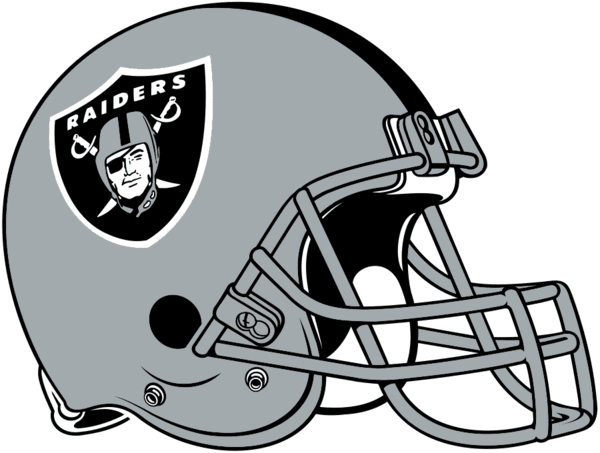The Las Vegas Raiders franchise came about due to a last moment vacancy. In 1959 the formation of the American Football League (AFL) took root with eight teams. A franchise based in Minnesota, (not named yet) decided at the last minute to accept an offer to join the established National Football League (NFL) as an expansion franchise. This left the AFL with only seven teams. Barron Hilton, the owner of the Los Angeles Chargers, faced the possibility of forfeiting his franchse unless a second team was placed on the West Coast.
With the league’s viability teetering on survival, the idea of a franchise in Oakland emerged. Despite not initially having an ownership group, Oakland became the eighth franchise in the AFL, and so began the American Football League.
“Name the Team” Contest
The Oakland Tribune held a “name the team” contest and the franchise initially became known as the Oakland Senors. After approximately one week of contemplation, they changed the name to the Oakland Raiders. The team designed the now-familiar emblem of a pirate (or “raider”), which they still use today.
The team played their home games that first season in San Franscico; at Kezar Stadium and then in brand new Candlestick Park. The Raiders struggled in attracting fans, attendance typically was dismal; 12,000 (vs the Chargers in December), 9,000 (vs the New York Titan) and 7,000 versus the Denver Broncos to end the season. The team lost $500,000 their first year, and Buffalo Bills owner Ralph Wilson loaned the team $400,000 to keep afloat.
The Hiring of Al Davis
The team played exclusively at Candlestick in 1961; attendance picked up as home games averaged 50,000. In 1962 the Oakland Raiders started playing their home games in Oakland, at Frank Youell Field. This venue was a temporary as Oakland-Alameda County Coliseum was under construction. 1962 was also note worthy with the hiring of Al Davis as head coach and general manager. Davis had been in the Los Angeles Charger organization were he learned the offensive strategy of Chargers head coach Sid Gillman.

The “vertical game” is still associated with the Raider organization to this game. He implemented slogans such as “Commitment to Excellence” and “Just Win, Baby,” which becaome registered trademarks associated with the franchise.
John Rauch – Davis’ hand picked successor – guided the organization to three consecutive AFL Championship games in 1967, 1968 and 1969. The first year the Raiders went to Super Bowl II, losing to the Green Bay Packers, 33-14. The following years they lost the AFL title game to the New York Jets, and then the Kansas City Chiefs. Both the Jets and Chiefs would go on to win Super Bowls.
Las Vegas Raiders: The John Madden Era
In 1969 John Madden became the team’s head coach; the Raiders would win six division titles in the 1970s. Some of the key players on these teams included Hall of Fam offensive linemen Jim Otto, Gene Upshaw and Art Shell. Ken Stabler had become the quarterback, replacing Darrly Lamonica. One of his key offensive players was wide receiver Fred Biletnikoff. The Raiders won Super Bowl XI in the 1976 season, defeating the Minnesota Vikings by a score of 32-14.
By successfully winning an antitrust lawsuit filed against the NFL, Davis moved the team to Los Angeles in 198, prompted by the desire for a new stadium and increased revenue opportunities.
The Raiders won Super Bowl XV defeating the Philadelphia Eagles, 27-10. Key players included Jim Plunkett. It was Head Coach Tom Flores’s first of two Super Bowl winning teams. The Raiders would repeat as Super Bowl champions three years later. Marcus Allen earned MVP honor as he rushed for a record 191 yards in the game. A 74-yard touchdown run remains to this day a Super Bowl highlight.
The Raiders currently play in the American Football Conference (AFC) West Division along with the Denver Broncos, Kansas City Chiefs, and Los Angeles Chargers.
In 2020 the Raiders moved to Las Vegas, ostensibly for the same reasons they initially moved out of Oakland, for a new stadium and increased revenue opportunities. Allegiant Stadium has a seating capacity of approximately 65,000.
Barry Schustermann
Follow me on X @BarrySchust
Follow me on Facebook @Barry Schustermann



